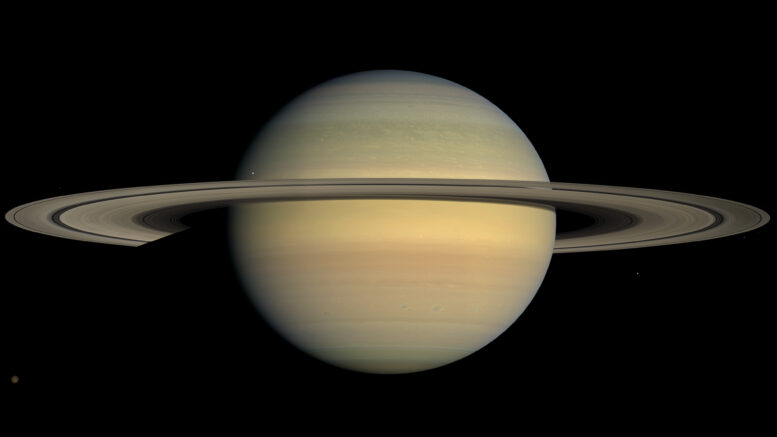Saturn is one of the most recognizable planets for both amateur astronomers and the pubic alike. The rings really help make the planet unique and help bring the mystique of the planet to life. For those with an amateur telescope, the best time to view Saturn is during the summer months at which time, one can se the rings, 3 or 4 moons, and potentially the Cassini Division.
Saturn is the sixth planet from the Sun and the second-largest in the Solar System, after Jupiter. Just like Jupiter, Saturn is a gas giant with an average radius of about 9x the radius of Earth. It only has 1/8th the average density of Earth; however, with its larger volume, Saturn is over 95x more massive. Saturn is named after the Roman god of wealth and agriculture; its astronomical symbol (♄) represents the god’s sickle.
| Value | |
| Size | 36,184 miles |
| Distance To The Sun | 890.8 million miles or 9.5 AU |
| Length of A Day | 10 hours 42 minutes |
| Length Of A Year | 29 years |
| Temperature (Lows and Highs) | Lows: -290°F Highs: 800°F |
| Number Of Moons | 82 |
| Number Of Rings | 7 groups |
| Missions To The Planet | 3 |
| Atmosphere | Approximately 75% hydrogen and 25% helium with traces of other substances like methane and water ice |
| Size Compared To Earth | 9 times wider than Earth |
| Discoverer And Discovery Date | Known By Ancients |
Moons
With 82 moons, Saturn is the king of moons as it has thee most number of moons of any planet. These moons range in size from larger than the planet Mercury, which is the moon Titan, to as small as a sports arena. 53 of these moon are officially named, while 29 are awaiting naming. Two of these moons, Enceladus and Titan have been of great interest to science.
Rings
One of the most popular and most striking features of Saturn is its rings. There are a total of 7 rings, with these rings varying in size. The theories for the formation of these rings vary, but the leading theory is that they are comprised of comets, asteroids or shattered moons that broke up before they reached the planet, torn apart by Saturn’s powerful gravity.
Fun Facts
Check out the Planetary Bodies Category for previous and upcoming articles on the solar system planets.
Sources
https://www.esa.int/Science_Exploration/Space_Science/Cassini-Huygens/Saturn_s_atmosphere

Be the first to comment on "Saturn: A Brief Overview"